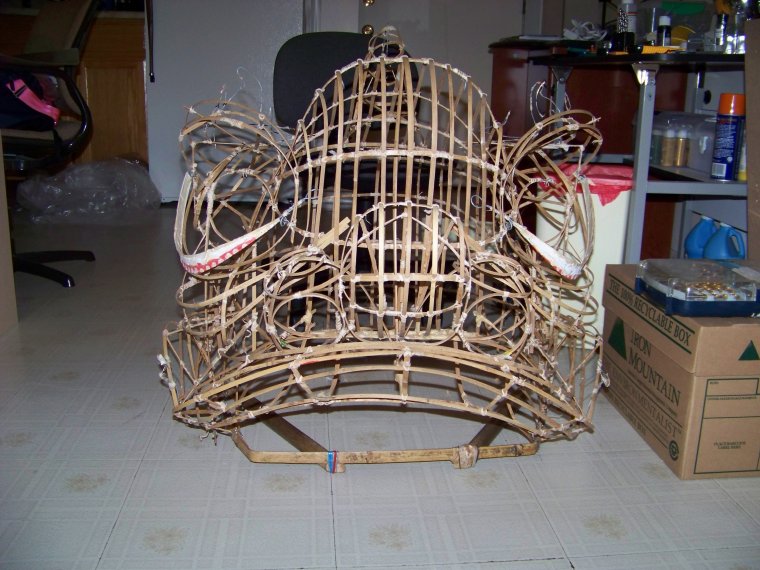
About four years ago, a good friend of mine brought me an old lion head named Ace. He mentioned to me that Ace needed some minor repairs and honored me with this task. I gladly accepted without having even seen the lion yet. At a first glance, Ace looked fine to me. It wasn’t until my friend lifted the lion head that I realized how damaged Ace really was. From afar, here’s how Ace looked like:

Ace before repairs started
It just looks like an old wrinkly lion head with the droopy eyed syndrome, right? The real problem was in the framework; the right side of the lion frame had completely detached from the base rim. It was definitely not a minor problem, but I still took the job. As I looked over Ace at home, I realized that this lion wasn’t just an ordinary lion; there was probably a rich amount of history with it. This is when I learned about the story of Ace.

History buried within
Ace was owned by a really kind woman in Sacramento, who lent Ace to UC Irvine’s Southern Young Tigers lion dance team. My good friend had started this team, and I presume he was the one who borrowed Ace. At the time, Southern Young Tigers was still a newly established team; Ace was really important to them. Most new lion dance teams know that during their initial year or two, they will not have a lion head to work with. To most new teams, a brand new lion head is just simply too expensive and unaffordable. Many years after the team was established, they were able to obtain many newer  lion heads. By then, Ace was old and was starting to break, but it was never fixed properly. As time passed, Ace’s damages kept spreading along the frame. Finally, it ended up in an unusable state, so my good friend came to me with Ace. He just wanted some simple repairs and “touch upsâ€, but I suggested something different.
Knowing that a lot of the paper mache had to be ripped off to fix Ace, I suggested that a complete restoration be done. Even if I fixed the detached frame, there would be many other places prone to breaking. The frame already had a ridiculous amount of loose joints and broken bamboo strips. I wanted to restore the beauty of Ace. It was strongly believed that Ace can be a beautiful lion head again.
Initially, the head would return to UC Irvine after the repairs and “touch upsâ€, but after the original owner said yes to the full restoration, Ace will be returned back to Sacramento. When the green light was given, I ripped off all the paper mache.

Bones of Ace - the frame
To my surprise, I found even more loose joints and broken bamboo pieces. It almost seemed as if Ace was abused. It took me almost 20 hours to fix the damage! After most of the damage was fixed, I started the most tedious process – paper mache. This is one of the hardest and longest steps of lion head restoration.

The first 8 paper mache squares
Hours and hours have passed, but I’ve only paper mache’d about half of the lion. Here is it’s current state.

Pretty much the entire back of Ace's head has been paper mache'd
Hopefully, I’ll finish restoring Ace by the end of the year!
Leave a Reply